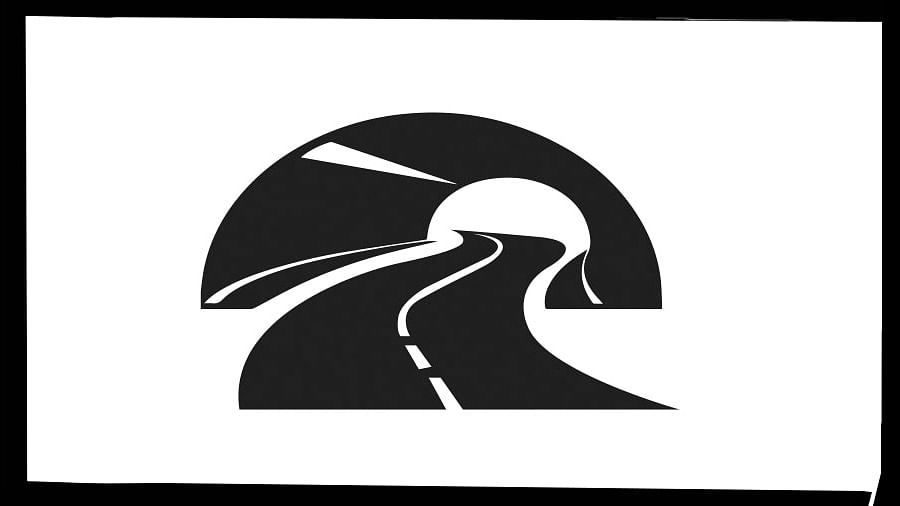
Credit: DH Illustration
Alice: Would you tell me, please, which way I ought to go from here?
The Cheshire Cat: That depends a good deal on where you want to get to.
Alice: I don’t much care where.
The Cheshire Cat: Then it doesn’t much matter which way you go.
Alice: ...So long as I get somewhere.
The Cheshire Cat: Oh, you’re sure to do that, if only you walk long enough.
Lewis Carroll, Alice in Wonderland
The Deputy Chief Minister of Karnataka, D K Shivakumar, has proposed the building of tunnel roads under the city as a solution to the traffic snarls Bengaluru has experienced in recent years. This Rs 50,000-crore proposal has been welcomed in some quarters (businesses) and opposed by others (civil society). Without going into this argument, I propose to look at some of the potential benefits of this proposal. This should anyway precede any position one takes regarding its desirability.
Some routes that this tunnel road system will cover have been spoken of in the newspapers. We do not have many details of the proposed ways in which it can be used. Harohalli-Hebbal? Kengeri-Sarjapura? JP Nagar-Cooke Town? Will there be intersections and traffic signals underground? Will we get potholed tunnels? Let us hope that unlike the roads of Bengaluru, these tunnels will not get waterlogged after rains.
Tunnel roads have played important roles in several cities. I am sure the government is familiar with the experiences of Guadalajara in Mexico, Boston in the US, as well as others elsewhere. The circumstances in which they were constructed, when and so on, are obviously relevant. It is also possible that these experiences do not have much relevance for Bengaluru.
I assume that the design of the tunnel system will be well integrated with the surface transport system that is quite chaotic today. This will include the cooperation of various agencies, extensive citizen consultation, not just at the city level but at the level of each ward committee. It is important to stress this since citizen experience with ‘consultations’ has been far from satisfactory so far. When a sum like Rs 50,000-crore is involved, citizens should be convinced that it is a good use of the taxes they pay. It will also help in getting citizens to put up with the huge inconvenience that they are sure to experience during the construction period.
The open consultations with all kinds of users -- elected representatives of the local bodies, resident welfare associations, slum dwellers, unions, civil society, government servants, etc., will provide clarity on issues involved, from fare structure to location of bus stops, BRT routes, free transport for women/senior citizens, cross-subsidies, and so on. This cannot be a mere government bureaucracy-consultant exercise.
Let us dream about the possibilities while waiting for these details.
Dream 1: This system of tunnel roads will be built on the principle that they are meant to facilitate the movement of people in the city. This can be best done by reserving these tunnel roads for public transport -- with the obvious exception of ambulances and emergency duty vehicles. A Bus Rapid Transport network, based on citizen feedback and origin-destination studies, can be designed that would reduce travel time for distances above 10 kilometres. The design of the tunnel road system will include escalator entrances and exits at busy points of the city in the same way as in underground metro stations -- except that these would be tiny in comparison as they would simply be bus shelters. The fares will be kept low. Travel will be free for senior citizens.
Dream 2: This tunnel system will serve many purposes. Apart from simple transport, it would also house cables of various sorts -- optical fibre, electrical, water supply, and sensors of all kinds to warn the authorities of any out-of-the-routine event. The tunnels would be open to BRT buses as well as private cars, and the latter would pay a toll for the right to use these tunnels. This toll would be so set as to subsidise, at least partially, the BRT. Fee collected from the users of the tunnel for optic fibre cable, etc., would be another source of revenue.
Other dreams are possible. The public consultations will provide clarity on all this, along with an understanding of how and why decisions are made, and an acceptance of any suggestion that is not built into the project. In all such big projects, compromises are necessary to serve what we call ‘public interest’.
Along with these dreams, I had nightmares.
Nightmare 1: The project will begin with inaugurations, celebrations and fanfare. Roads will be dug up, there will be dust in the air, potholes will proliferate, and surface transport will be badly affected. Travel time per kilometre will go up to half-an-hour.
Then, an election takes place, and the new government forgets about the project, says such a waste of money cannot be permitted.
Nightmare 2: The tunnel road system will be reserved for private cars and expensive taxis, as these transport ‘important people’ to critical meetings and they cannot afford to waste their valuable time in traffic jams. The ordinary citizens will have to be satisfied with any improvements that may or may not result on the surface road system when the tunnel road system gets implements for the ‘important people’.
I woke up.
(The writer is a senior citizen living in Bengaluru. He is also founder and president of the governing board of Centre for Budget and Policy Studies)